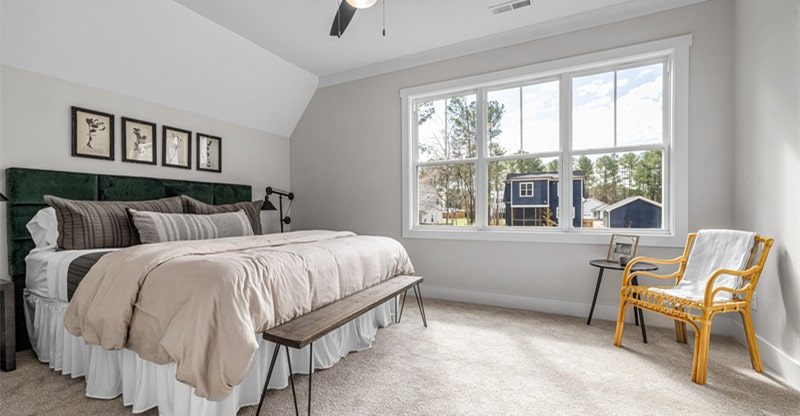Insulation 101: Understanding Different Types and Materials
When it comes to energy efficiency and maintaining a comfortable indoor environment, insulation plays a crucial role. Proper home insulation helps reduce heat transfer, control temperature fluctuations, and minimize energy consumption in residential and commercial buildings.
However, with the variety of home insulation types and materials available, it can take time to determine the most suitable option for your needs. This blog post will provide a comprehensive guide to insulation, exploring different types and materials to help you make informed decisions for your insulation projects.
Different Types of Insulation
#1. Fiberglass Insulation
Fiberglass insulation is one of the most common and widely used insulation materials. It consists of tiny glass fibers that trap air pockets, creating a thermal barrier. Fiberglass insulation comes in rolls or batts and can be installed in walls, floors, and ceilings. It offers good thermal performance, is cost-effective, and has fire-resistant properties.
However, it’s essential to handle fiberglass insulation carefully and use proper protective equipment during installation to avoid skin and respiratory irritation.
#2. Cellulose Insulation
Made from recycled paper and treated with fire-retardant chemicals, cellulose is an eco-friendly option for insulation. It can be blown into walls, attics, and other hard-to-reach spaces, providing excellent coverage and reducing air leakage. Cellulose has good thermal performance and sound-dampening properties. It may settle over time, requiring periodic checks and potential reapplication.
#3. Spray Foam Insulation
Spray foam insulation is a versatile option that expands upon application, filling gaps and sealing air leaks. It can be either open-cell or closed-cell foam. Open-cell foam is less dense and provides excellent sound insulation, while closed-cell foam is denser, offering superior thermal resistance and moisture barrier properties.
Spray foam insulation is commonly used in walls, attics, and crawl spaces. Professional installation is recommended due to the precise mixing and application requirements.
#4. Mineral Wool Insulation
Mineral wool insulation is made from natural or recycled minerals, such as rock or slag, which are melted and spun into fibers. It is available as batts, rolls, or loose-fill. Mineral wool insulation offers good fire resistance, sound absorption, and thermal performance. It is commonly used in walls, roofs, and around pipes and ducts. Additionally, mineral wool is moisture-resistant and provides excellent protection against mold and mildew growth.
#5. Rigid Foam Insulation
Rigid foam insulation is a lightweight, durable option with excellent thermal resistance. It is available in panels or boards made from materials like polystyrene, polyisocyanurate, or polyurethane. Rigid foam insulation can be used in various applications, including walls, roofs, and foundation walls. It offers high insulating values, resists moisture, and provides structural support. However, proper installation and sealing of joints are crucial to prevent air leakage.
#6. Reflective Insulation
Reflective insulation is designed to reflect heat away from the building, particularly in hot climates. It consists of a reflective material, such as aluminum foil, applied to a substrate, often combined with other insulation materials. Reflective insulation is commonly used in attics, roofs, and walls. It helps reduce radiant heat transfer and can enhance the overall energy efficiency of the building. Proper installation with an air gap is essential to maximize its effectiveness.
#7. Natural Insulation
Natural insulation is made from wool, cotton, hemp, flax, or bamboo. It has excellent thermal resistance and soundproofing properties. Additionally, natural insulation is biodegradable and environmentally friendly. However, installation can be more labor-intensive than other types of insulation, and it may need to be reapplied periodically. Natural insulation is commonly used in attics, walls, and flooring. It requires careful handling to protect the fibers and prevent skin irritation.
Choosing The Right Insulation For Your Home
When selecting insulation for your home, it’s essential to consider factors such as:
#1. R-value
R-value measures thermal resistance or how well the home insulation resists heat flow. Higher R-values provide better insulation performance and energy savings.
#2. Location
Different types of home insulation may be more suitable for other locations, such as walls, attics, roofs, and crawl spaces.
#3. Climate
Your climate and weather patterns should be considered when selecting a home insulation. This will help ensure the best performance for your home in different seasons and temperatures.
#4. Cost
The insulation cost will vary depending on the type, quantity, and quality. Consider your budget when making a decision.
Where Can I Install Them?
Insulation can be installed in a variety of places in your home. For example, it can insulate walls, floors, attics, roofs, garages, and basements. Insulation may also be used around windows and doors to prevent air leaks. Professional installation from a company is recommended for the best results. A professional like iFOAM can help you select the right type and ensure it is installed correctly.
Final Thoughts
Insulation is an essential part of any home’s construction and can significantly impact energy efficiency. With proper selection and installation, you can ensure your home is properly insulated for maximum comfort and energy savings. If you need assistance with insulation installation, contact a professional today.



